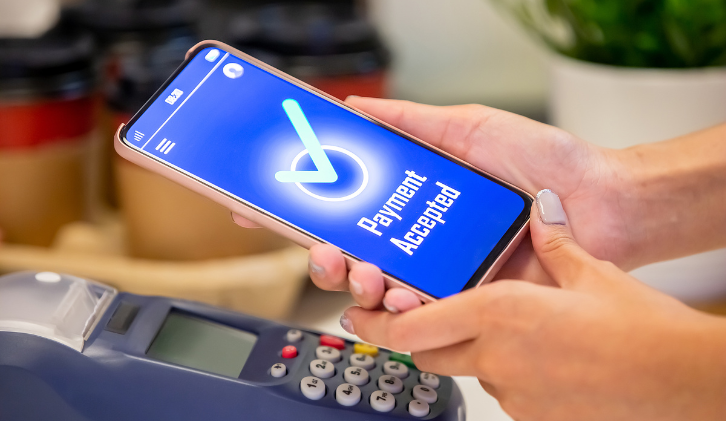Embedded Payments
Liberis are experts in embedded finance but there is an entire embedded ecosystem out there! Over the next 5 weeks, we will be releasing a new blog each week that will dive into the full embedded ecosystem and the many different facets of it that businesses can avail of. First up is Embedded Payments where we will discuss its evolution, from traditional payment methods to online payments to embedded payments.
Return to blog posts
Put simply, embedded finance refers to banking-like services offered by nonbanks. This seamless integration of financial services by non-financial companies is a reaction to consumers’ demand for a more digital-first experience, particularly in the wake of the pandemic. One branch of this vast finance revolution has the power to streamline the previously clunky online payments process: embedded payments – but it has been a long journey to reach this inflexion point.
Online payments
Legend has it that in 1994 an order for a large pepperoni pizza made history when it was placed on Pizza Hut’s new website, making it the world’s first online purchase. Three years later Coca-Cola laid claim to the first mobile payment when it allowed customers to pay for their drinks by sending text messages from their phones. Since then, online payments have become part of our everyday lives amid the exponential growth of the internet and our subsequent reliance on e-commerce.
There’s no doubt that online payments have been a game changer for businesses of all sizes – practically consigning cheques to the history books and spurring conversations about a cashless society. Take Pizza Hut for example: by 2008 its online sales topped $1 billion and by 2013 they reached $6 billion. But in an age where speed and convenience are consumer prerequisites, there is always room for improvement.
Traditionally, online payments have been handled by third parties – either large financial institutions or payment processors. This additional layer of friction means financial transactions are separate processes, with customers directed outside the service. Forced to use these third-party integrations to facilitate payments, vendors experience a disconnect with their customers, creating a disjointed user experience.
Embedded payments
A growing expectation among e-commerce consumers that digital ecosystems should encompass every aspect of the transaction process means the middleman’s days are numbered. This has prompted an appetite among businesses for embedded payments solutions that provide the payment autonomy they need to achieve financial independence and enhance the user experience.
An embedded payments strategy – which can be tailored to businesses of all sizes – seamlessly integrates payment processing into the e-commerce shopping journey, eliminating the need for a third-party payment provider or banking service. This empowers businesses to take control of the different payment processes they are exposed to – such as wire transfers for one-off purchases of goods and services and Automated Clearing House (ACH) transactions for managing direct debits – and to harness real-time payments.
With the user experience consolidated under a single brand when making payments, businesses can access a wealth of compelling benefits:
- Create new revenue streams
- Quickly onboard new merchants
- Improve the customer experience
- Streamline operational processes
- Offer tailored suites of products with zero friction to adopt
- Improve customer retention
- Offer greater pricing flexibility
A quick look at the World Bank’s definition of financial inclusion underscores the role embedded payments play in driving this important concept: “Financial inclusion means that individuals and businesses have access to useful and affordable financial products and services that meet their needs – transactions, payments, savings, credit and insurance – delivered in a responsible and sustainable way.”
Accessing an autonomous payments network that seamlessly sends and receives money internationally by streamlining processes is no longer a pipe dream for businesses and consumers.
As forward-thinking organisations rethink legacy systems and invest in digital transformation, they are embracing the opportunities afforded by embedded payments – and with third-party friction removed from the equation, it’s never been easier to buy a pizza.
The future of embedded payments
The embedded payments industry embodies everything good about fintech: speed, agility, flexibility, convenience – and it’s going from strength to strength amid consumer demand for streamlined processes, with revenues expected to increase from $43 billion in 2021 to $138 billion in 2026. As embedded payments become ubiquitous throughout the online payments landscape, market research firm IDC predicts that 74% of online consumer payments globally will be conducted via platforms owned by nonfinancial institutions by 2030.
Two new trends could accelerate this market growth: embedded B2B payments and the opportunity for financial institutions to work with fintech partners to support the growing demand for embedded B2B payments. The growth of banking-as-a-service and open-access APIs are presenting businesses with the ability to leverage B2B embedded financial services technology to customise payment solutions for their needs. The IDC report states that 73% of financial institutions around the world have payments infrastructures that are ill-equipped to handle payments for 2021 and beyond. Fortunately, fintech has created a new opportunity for banks to modernise their payment services.
What’s next
Take a look at our blog on embedded deposits, where we discuss how they have become a central offering of non-bank financial services companies to meet the demands of their customers.
Get in Touch
If you want to learn more about partnering with Liberis, feel free to get in touch.

























